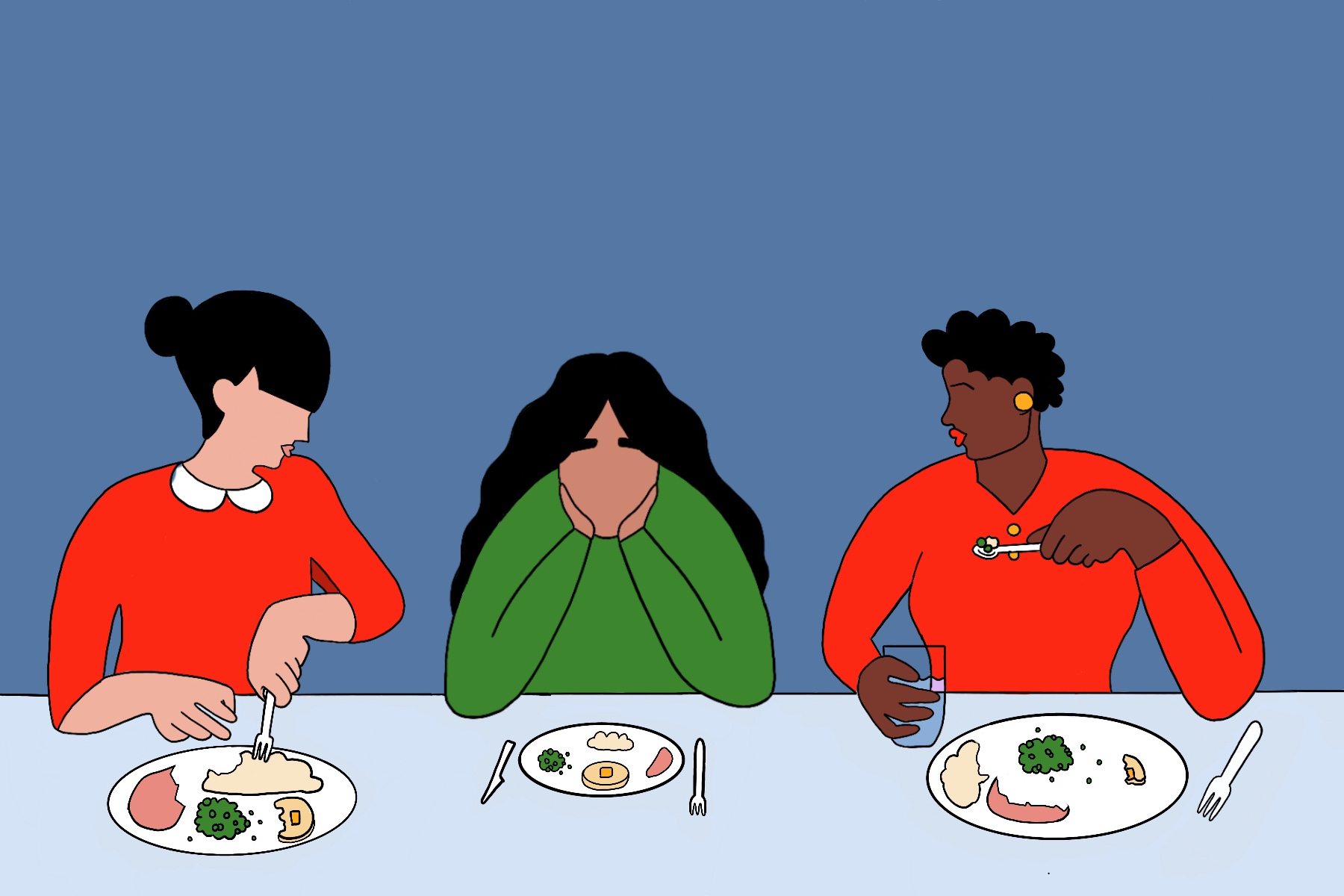The chance for recovery increases the earlier an eating disorder is detected. Therefore, it’s critical to recognise some of the indicators of an eating disorder and when disordered eating turns into an eating disorder.
This isn’t intended as a “checklist “. Someone struggling with an eating disorder generally won’t have all of the signs and symptoms at once, and the warning signs vary across eating disorders and don’t always fall into neat categories. Rather they provide a broad overview of the different behaviours that can point to a problem.
Generally speaking, the are two aspects of which signs and symptoms appear: first aspect which is emotional and behavioural changes, and second is physical change.

Eating disorders spiral from within?
Firstly, emotional and behavioural changes can be noticed through general behaviors and attitudes that indicate that weight loss, dieting, and control of food are becoming primary concerns, being preoccupied with weight, food, calories, carbohydrates, fat grams, and dieting, refusal to eat certain foods, progressing to restrictions against whole categories of food (e.g., no carbohydrates, etc.) or appears uncomfortable eating around others.
In fact, they commence making excuses of why they’re not eating in public gatherings or food “rituals” like eats only a particular food or food group excessive chewing, doesn’t allow foods to touch, skipping meals or taking small portions of food at regular meals, any new practices with food or fad diets, including cutting out entire food groups (no sugar, no carbs, no dairy, vegetarianism/veganism), or withdrawal from usual friends and activities to avoid the stress around public eating, so far and so forth.
It can also show through experiencing extreme mood swings due to the change in food intake whether thats a surplus or a deficit, extreme concern with body size and shape, frequent checking in the mirror for perceived “flaws” in appearance.
How about the outside?
Onto the physical aspect, symptoms and signs that may show are; noticeable fluctuations in weight, both up and down, stomach cramps, constipation, acid reflux, etc. Menstrual irregularities for women — missing periods or only having a period while on hormonal contraceptives, also may show in difficulties concentrating, abnormal laboratory findings (anemia, low thyroid and hormone levels, low potassium, low white and red blood cell counts).
Dizziness, especially upon standing, feeling faint and passing out, feeling cold all the time, insomnia, sleep problems, dental problems, such as enamel erosion, cavities, and tooth sensitivity, dry skin and hair, and brittle nails, fine hair on body, which is your body’s response to maintain heat insulation, Cavities, or discoloration of teeth, from vomiting, cold, mottled hands and feet or swelling of feet.
How can I help?
All these could be symptoms & signs of potential eating disorder, so if you or a loved one are experiencing any of these issues; here’s what you need to do:
Once you’ve decided to make a change, opening up about the problem is an important step on the road to recovery. It can feel scary or embarrassing to seek help for an eating disorder, so it’s important to choose someone who will be supportive and truly listen without judging you or rejecting you. This could be a close friend or family member or a teacher, or school counselor, anyone whom you feel safe with and whom you trust. Or you may be more comfortable confiding in a therapist or doctor.
Start the conversation and slowly open up about how you’ve been feeling and the thoughts that have been crossing your mind, that’s the first step to taking the right path to recovery. And remember, recovery is never linear, so always have faith in yourself.













